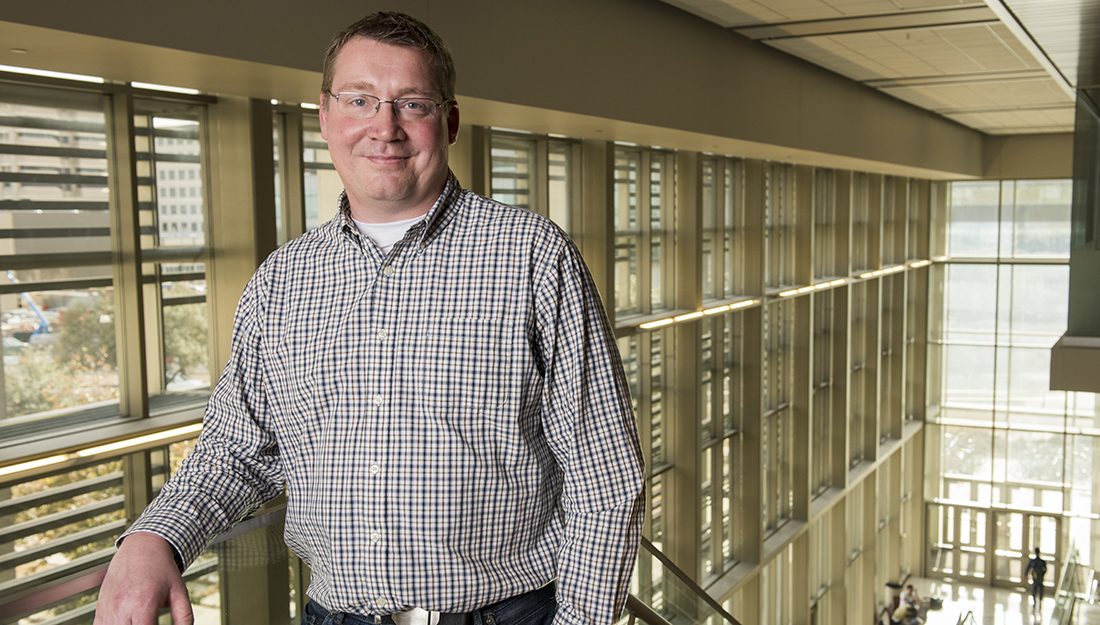- Christina Sumners
- Medicine, Research, Show on VR homepage
Nanoparticles may now grow bone and cartilage for humans
Researchers discover how new tissues can grow from stem cells to treat conditions like osteoarthritis without dangerous growth factors

Texas A&M University Health Science Center
Human stem cells have shown potential to be revolutionary in medicine, possibly curing diseases like cancer, regenerating organs and even keeping a body young. More modestly, they can also transform into cell types such as bone and cartilage to repair injuries or treat conditions like osteoarthritis. The current approach to obtain these bone and cartilage cells is to expose stem cells to instructive protein molecules known as growth factors. However, use of these growth factors in the human body can cause negative effects, including tumors.
Researchers at Texas A&M University have explored a new class of nanoparticles that can direct stem cells to become bone or cartilage cells without the use of these growth factors.
They demonstrated that a specific type of two-dimensional (2-D) nanoparticles, also known as nanosilicates, can potentially grow bone and cartilage tissue from stem cells in the absence of growth factors. These nanoparticles are similar to flaxseed in shape, but 10 million times smaller in size. This work by Akhilesh Gaharwar, PhD, an assistant professor in the Department of Biomedical Engineering in the Texas A&M College of Engineering, and his collaborators, including Carl Gregory, PhD, an associate professor in the College of Medicine, part of the Texas A&M University Health Science Center, was recently published in the journal Proceedings of the National Academy of Sciences.
“This work represents an excellent example of the long-standing interdisciplinary collaborations between the Texas A&M Health Science Center and College of Engineering,” Gregory said. “One way to foster innovation is to bring together investigators with shared interests but substantially different research approaches. Life science collaborations with engineering are powerful in this respect because they encourage investigators to re-assess dogmatic approaches that frequently slow progress.”
Two-dimensional nanomaterials have gained increasing popularity over a variety of fields, such as energy, optics and regenerative engineering, due to their extremely small size and unique shape. These nanoparticles consist of highly organized atomic layers made from minerals. The minerals are abundantly present within the human body and help in some vital functions.
“To understand how these nanoparticles interact with stem cells, we utilized a next-generation sequencing technique called RNA-seq,” said Irtisha Singh, a computational biologist from Weill Cornell Medicine at Cornell University and a corresponding author. “RNA-seq takes a snapshot of gene activity of the cell at any given moment. This is similar to taking a high-resolution photo during the Super Bowl and identifying the reaction of every fan during the touchdown.”
RNA-seq uses next-generation sequencing to reveal the presence and quantity of RNA in a biological sample at a given moment. For example, cell-nanoparticle interactions can result in significant change in cellular behavior that can be observed by using this technique.
“This technique is very sensitive to investigate the interaction of a wide variety of nanomaterials with cells,” said Jake Carrow, a doctoral candidate in Gaharwar’s lab and co-first author of the study. “With this combination of nanotechnology and computational biology, we can better understand how a material’s chemistry, shape and size can contribute to cell functions.”
In this study, nanosilicates demonstrated some very interesting capabilities when applied to adult human stem cells. These cells presented signaling typically observed during regeneration of bone and cartilage. This indicates a great deal of potential for these nanoparticles as a possible therapy for osteoarthritis, among other conditions.
“Before collaborating with Dr. Gaharwar, I would never have considered that a silicate-based microparticle would have useful bioactive effects on mesenchymal stem cells, but we are now developing nanosilicate-based cell delivery scaffolds for bone formation in applications such as bone trauma and spine fusion,” Gregory said. “Unlike conventional bone scaffolds, these nanosilicates have well-characterized bioactivities and can be cost-effectively manufactured.”
This cellular response is believed to originate from the unique physical and chemical composition of the nanoparticles. This premise of mineral-based particles affecting cell behavior has opened the doors to the development of new class of therapies.
“The ability to customize a therapy to a specific tissue, simply by changing the mineral content within the nanoparticle, presents a great potential within the field of regenerative engineering,” said Lauren Cross, also co-first author on the publication. “We believe this new field of ‘mineralomics’ can provide a viable alternative compared to the current treatments existing today.”
Gaharwar’s lab targets cell-biomaterial interactions across multiple biological scales. His group is specifically interested in the repair and regeneration of biological tissues through the use of nanoengineered biomaterials. This research is just one of several collaborations between his team and faculty at the College of Medicine. Gregory and Gaharwar had another collaborative paper published at the same time that made the front cover of the journal Stem Cells Translational Medicine. “The simultaneous timing of both publications is a good example of the productivity of the collaboration,” Gregory said. “Our team at the Health Science Center has benefited greatly from collaborations with the College of Engineering, and I am confident that this will continue to be a mutually beneficial relationship, especially as we move forward with the EnMed program.”
This research is funded by the National Institute of Biomedical Imaging and Bioengineering.
Adapted from an article by Lorian Hopcus
Media contact: media@tamu.edu


